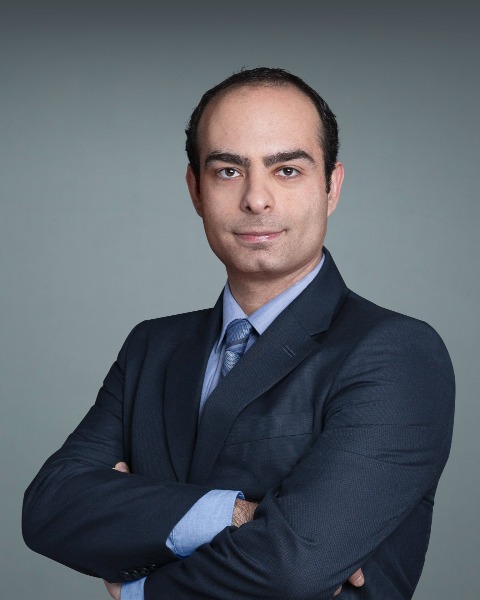SIR 2025
Interventional Oncology
Scientific Session
Hepatic Tumor Histotripsy: Procedural and Follow-Up Imaging Characteristics

Tarub S. Mabud, MD, MS
Resident Physician
New York University Grossman School of Medicine, United States- DH
D. Brock Hewitt, MD, MPH
Assistant Professor
NYU Langone Health, United States 
Shu Liu, MD
Clinical Assistant Professor
NYU Grossman School of Medicine, United States
Frederic J. Bertino, MD (he/him/his)
Director of Pediatric Interventional Radiology
NYU Langone Health, United States
Bedros Taslakian, MD, MA (he/him/his)
Associate Professor, Director of VIR Research Program; Director of Clinical Research Integration
NYU Langone Health, United States- CW
Christopher Wolfgang, MD, PhD
Professor
NYU Langone Health, United States - MS
Mikhail Silk, MD
Assistant Attending
Memorial Sloan Kettering Cancer Center, United States
Presenting Author(s)
Author/Co-author(s)
Histotripsy uses a novel mechanism of mechanical tumor destruction that can preserve collagenous structures, including blood vessels and bile ducts greater than 2-3 mm. This study characterizes procedural and follow-up imaging from patients who underwent histotripsy of liver tumors.
Materials and Methods:
A single-center database of all patients who underwent histotripsy for primary or secondary liver tumors from February to August 2024 was compiled. All patients underwent pre- and immediate post-treatment contrast-enhanced portal venous phase CT. Procedural CTs were reviewed to characterize pretreatment lesion and post-treatment ablation zone appearance. If available, 1-month follow-up cross-sectional imaging was evaluated to characterize follow-up ablation zone appearance. Paired t-tests were performed to compare ellipsoid lesion and ablation zone volumes.
Results:
Histotripsy was performed on 43 liver tumors in 23 patients with stage 4 cancer (47.8% pancreatic adenocarcinoma, 21.7% colorectal adenocarcinoma). Treated right lobe lesions (55.8%) were all in segments 5 or 6, and treated left lobe lesions (44.2%) were all in segments 3 or 4B. 84.2% of lesions were discrete masses (mean volume 12.7 + 22.2 mL); 15.8% were large irregular tumor complexes. Average per-lesion treatment volume was 14.8 + 9.4 mL. Immediate post-treatment CT demonstrated either a focal hypoattenuating ablation zone (64.9%), a large geographic region of hypoattenuation (21.6%), or no discernable change (18.9%) relative to pretreatment CT. For discrete masses, post-treatment focal ablation zone volume (mean 17.5 + 22.6 mL) was significantly larger than pretreatment lesion size (p< 0.0001). 1-month follow-up imaging was available for 18 lesions (50% CT, 50% MRI). CT findings showed hypoattenuating foci, while MRI demonstrated hypointense foci with or without rim enhancement on T1 post-contrast portal venous phase. Lesion ablation zone volume on 1-month imaging (mean 7.7 + 8.9 mL) was significantly smaller than pre-treatment lesion volume (p< 0.0001).
Conclusion:
Procedural CT during histotripsy exhibits a range of appearances, including classic focal ablation zones but also geographic regions of hypoattenuation or no discernable findings. The treatment zone was visible on 1-month imaging and often demonstrates a focal ablation zone vs residual lesion that is smaller than pretreatment size.


.jpg)